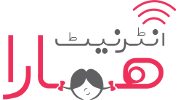I am not too sure about what my take would be on plagiarism — an issue that has been plaguing the world of journalism of late. Newspapers, today are riddled with overt theft of words and phrases; for the most part disguised as ‘influence’, or more lately ‘attribution’, where a mere mention of the author and backlink to the original article is considered enough accreditation; not to be challenged.
Until he came under fire for what was later revealed to be one of the biggest plagiarism scandals in the video game industry this year, not many had heard of Filip Miucin— recently fired by the video game and entertainment mega-site IGN, largely for lifting game reviews wholly or partly from other sources without accreditation.
He was, of course, not the only one. In this year alone, there were several more that were caught lifting material off of the internet. Anne Blythe— a News & Observer reporter— was fired as the newspaper found many instances of Blythe taking phrases, sentences or paragraphs from other sources without attribution. Similarly, The Washington Post “dismissed” reporter Marwa Eltagouri for not attributing properly.
Vocabulary.com defines attribution as, “identifying a source or cause of something — in this case, the person who first said the quote.” Aggregation and curation, according to Steve Buttry, “are techniques of using content from other sources to provide content for your audience.” This was fine, as long as it was followed to a T. Somewhere along the way, however, the lines started getting blurred between simple attribution and downright ‘copying, pasting’ of the content. Hence aggregation and attribution are now serving as a convenient excuse to lift things off of other sources— even complete articles.
In their defence, publications involved in blatant plagiarism, have maintained that the original source and backlink to the original article is always provided. But does that even suffice? As owing to the tiny concentration spans of readers these days, most of them wouldn’t even bother checking the original article. To top it off, it is quite possible that the same article — word by word — is found in different publications all over the internet, with pretty much the same kind of “attribution” policy. Organisations call this process aggregation or more commonly, curation, that is extracting useful knowledge from the internet and subsequently providing it—at times word by word— to the end reader.
Recently, in August the popular Bust Magazine admitted that it “unintentionally published plagiarism.” It was found out that an article in the magazine’s August/September print issue was heavily plagiarised from another magazine’s previously published article. The writer said that she was “unaware that the original author had to be cited”. Curiouser indeed.
Perhaps what’s infinitely worrying is the frequency with which these “incidents” are being identified now. But it’s not clear if it is because such occurrences are happening more frequently now or simply, because like with everything else on internet, plagiarism in journalism has also been just brutally exposed. The importance of the internet — that spook — is something that can’t be stressed enough.
Initially, it does seem that the mere presence of such a huge amount of information on our finger tips is to be blamed for this plagiarism epidemic—not to forget, the rather depressing fact that journalists now are required to do much more in the same number of hours that were available to their peers, back in the 19th century. But that is one way of looking at this extraordinary phenomenon called the internet. Once you look deeper into it, however, you realise that the advent of internet is precisely why catching these plagiarism incidents has become so easily possible.
We are living in interesting times. The very tool that facilitates journalism, facilitates the detection of plagiarism in it as well. One thing that publications should do is to put quality plagiarism checkers in place and thoroughly check each piece for plagiarism— both in print and on the web. But plagiarism checkers—even the very pricey ones— can only do so much. It is necessary to a system in place where every report/article is read by two to three editors, so that even the minutest trace of plagiarism is detected. However, no matter what measures are adopted, a fool proof system of plagiarism detection is just not possible.
When Filip Miucin got sacked for his plagiarism, people started talking about the outrageous deadlines reporters and editors face in the newspaper industry— especially the dailies. This conversation should not die anytime soon. When a reporter works for a story, when a writer writes a piece, a huge amount of effort goes into it— sleepless nights, unnerving field work not to mention the accompanying anxiety, everything is a part and parcel of journalism.
Attribution, curation or aggregation, all are fine but they should not be manipulated in this manner. A mere mention and backlink do not suffice. It’s time newspapers realised and acted upon that.
This blog has been written by Wajiha H, Member of DRF’s Network of Women Journalists for Digital Rights.





